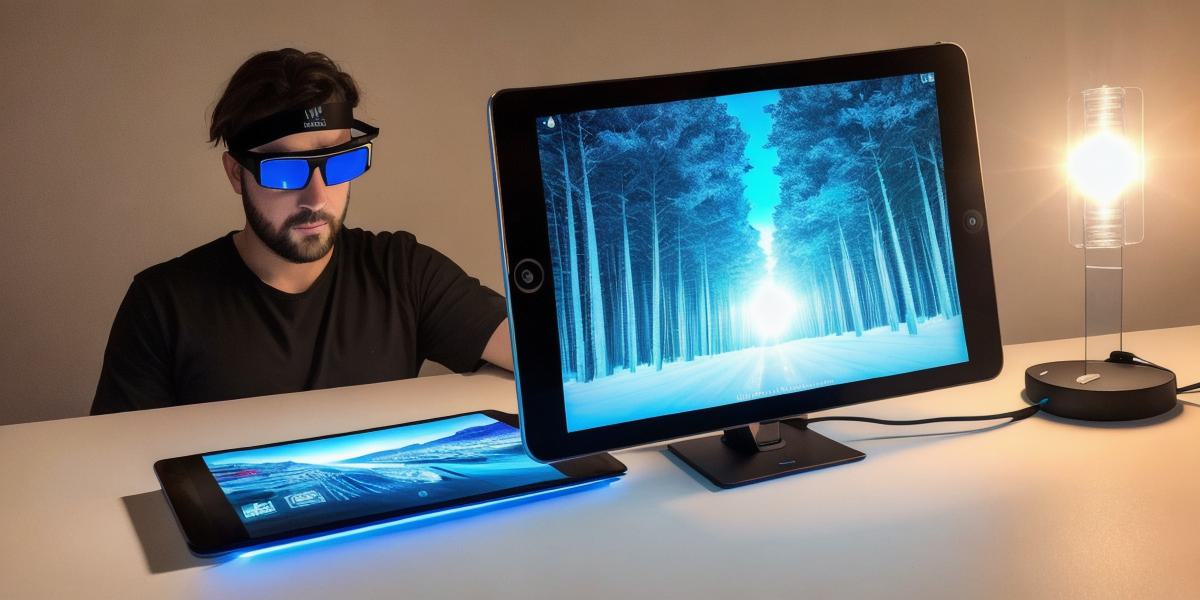Introduction:
Augmented reality (AR) has become increasingly popular in recent years, particularly in industries such as gaming and advertising. But what is AR, and how can it be developed using JavaScript? In this comprehensive guide, we’ll explore the world of AR with JavaScript, including its applications, development techniques, and best practices.
What is Augmented Reality?
Augmented reality is a technology that overlays digital information onto the real world. It allows users to interact with virtual objects and experiences in their physical environment. In simpler terms, AR enhances the user’s experience of the real world by adding digital elements to it.
How does Augmented Reality work?
AR works by using a combination of sensors, cameras, and algorithms to track the user’s position and orientation in the real world. This information is then used to create an interactive virtual environment that overlays digital objects onto the real world. The most common AR platforms are ARKit (for iOS) and ARCore (for Android).
Applications of Augmented Reality
AR has a wide range of applications, including gaming, advertising, education, and healthcare. In gaming, AR allows users to interact with virtual objects in their physical environment, creating a more immersive experience. In advertising, AR can be used to create interactive product demonstrations and promotions. In education, AR can be used to enhance learning experiences by providing students with interactive visualizations of complex concepts. In healthcare, AR can be used for remote patient monitoring and surgical planning.
Developing Augmented Reality with JavaScript
Developing AR applications with JavaScript requires a combination of front-end and back-end technologies. The front-end typically involves using HTML, CSS, and JavaScript to create the user interface and interactivity of the application. The back-end involves using a server-side language such as Node.js to handle data storage, processing, and communication between the client and server.
AR development with JavaScript can be broken down into several steps:
- Setting up the development environment: This involves installing the necessary tools and libraries for AR development, such as A-Frame and Three.js.
- Creating the user interface: This involves using HTML, CSS, and JavaScript to create the interactive elements of the application, such as buttons and sliders.
- Integrating ARKit or ARCore: This involves integrating the chosen AR platform into the application, using APIs provided by the platform.
- Adding digital objects and interactions: This involves using Three.js or another 3D rendering library to create and position virtual objects in the real world, and adding interactive elements such as touch events.
- Testing and debugging: This involves testing the application on a device with AR capabilities and debugging any issues that arise.
Best Practices for Augmented Reality Development
To ensure a smooth development process and a high-quality product, there are several best practices to follow when developing AR applications with JavaScript:
- Optimize performance: AR applications require a lot of processing power, so it’s important to optimize performance by minimizing the number of draw calls and reducing the size of textures.
- Use a responsive design: The user interface should be designed to be responsive to different screen sizes and orientations, ensuring that it works well on both desktop and mobile devices.
- Keep it simple: AR applications can quickly become complex, so it’s important to keep the user experience simple and intuitive.
- Test thoroughly: AR applications require extensive testing to ensure that they work properly on different devices and in different environments.
- Follow platform guidelines: ARKit and ARCore have specific guidelines and best practices that should be followed to ensure compatibility and performance.
Summary:
Augmented reality is a powerful technology with many potential applications in various industries. By using JavaScript to develop AR
